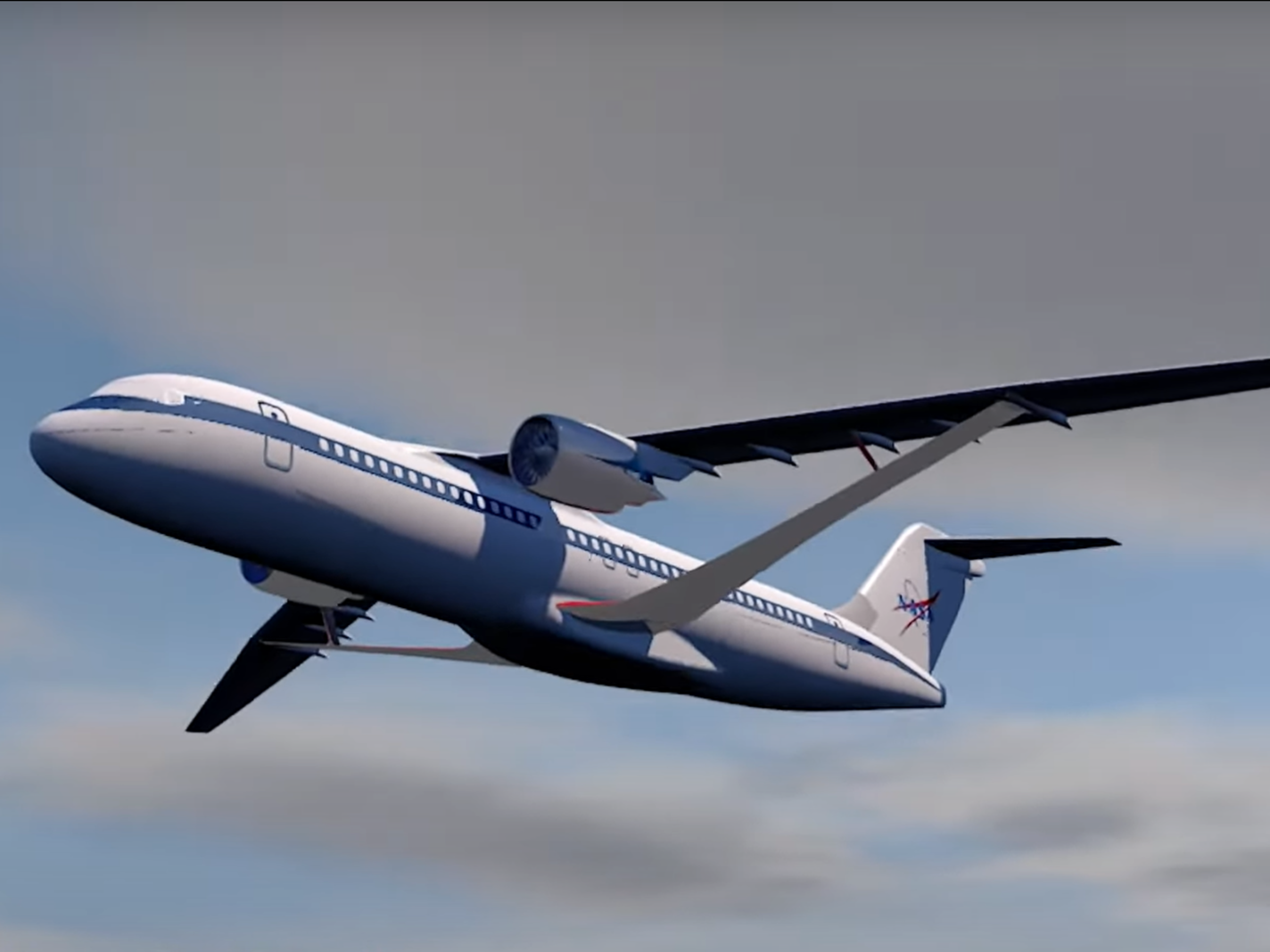Nasa reveals billion-dollar ‘plane of the future’ plan to massively cut emissions
Radical new wing design and other advancements could cut commercial airline emmissions by up to a third

Nasa has announced a billion-dollar plan to develop a futuristic plane aimed at transforming the aviation industry and significantly reducing the emissions of commercial airlines.
The US space agency will invest $425 million over seven years into the Sustainable Flight Demonstrator project, while Boeing and other partners will contribute a further $725 million.
“Nasa has dared to go farther, faster, higher, and in doing do, Nasa has made aviation more sustainable and dependable,” said Nasa Administrator Bill Nelson.
“It’s our goal that Nasa’s partnership with Boeing to produce and test a full-scale demonstrator will help lead to future commercial airliners that are more fuel efficient, with benefits to the environment, the commercial aviation industry, and to passengers worldwide.”
The project will test new technologies like a radical wing redesign to improve aerodynamics for next-generation single-aisle aircraft.
The Transonic Truss-Braced Wing concept invloves extra-long, thin wings stabilised by diagonal struts, resulting in an efficient shape that creates less drag and therefore less fuel consumption.
When combined with other advancements in propulsion systems, it could potentially reduce emissions by up to a third compared to today’s most efficient single-aisle aircraft.
Nasa hopes the technologies developed and demonstrated through the Sustainable Flight Demonstrator project will reach commercial aircraft in the next decade.
The ultimate goal for the aviation industry is to reach net-zero carbon emissions by 2050.
“The Transonic Truss-Brace Wing is the kind of transformative concept and investment we will need to meet those challenges,” said Nasa Associate Administrator Bob Pearce.
“Critically, the technologies demonstrated in this project have a clear and viable path to informing the next generation of single-aisle aircraft, benefiting everyone that uses the air transportation system.”
Subscribe to Independent Premium to bookmark this article
Want to bookmark your favourite articles and stories to read or reference later? Start your Independent Premium subscription today.

Join our commenting forum
Join thought-provoking conversations, follow other Independent readers and see their replies